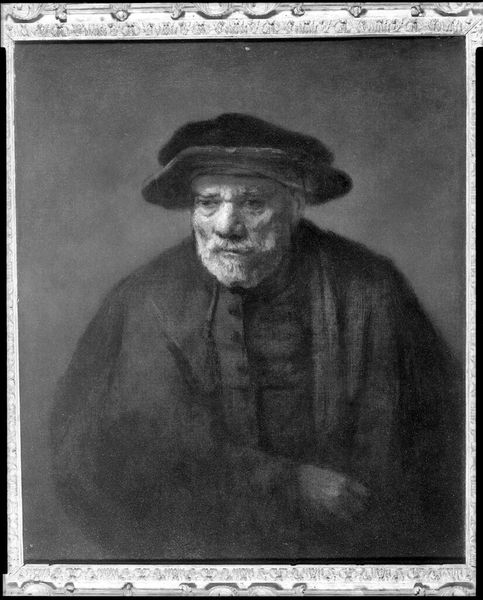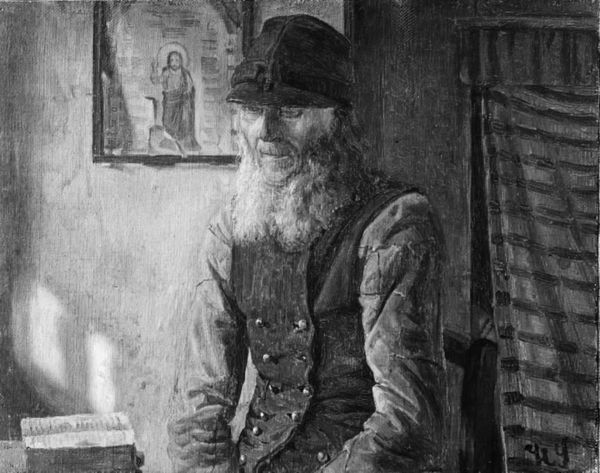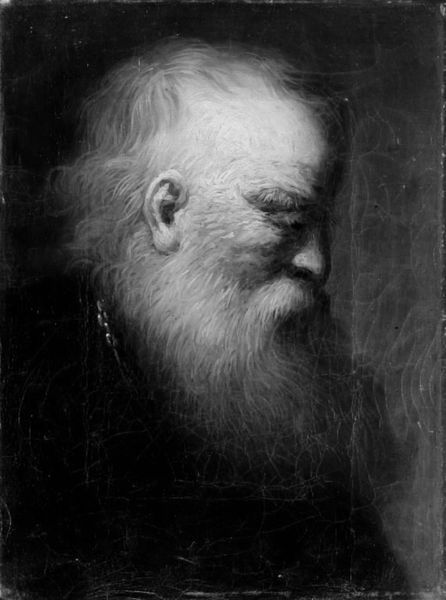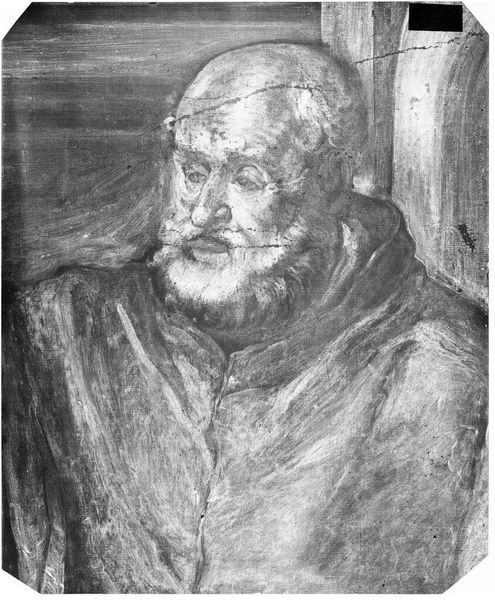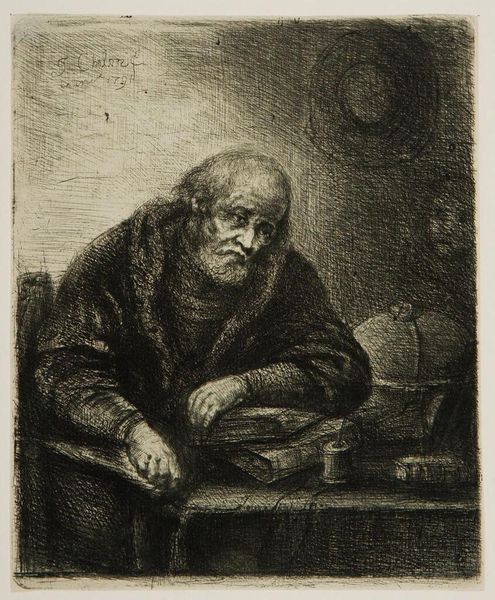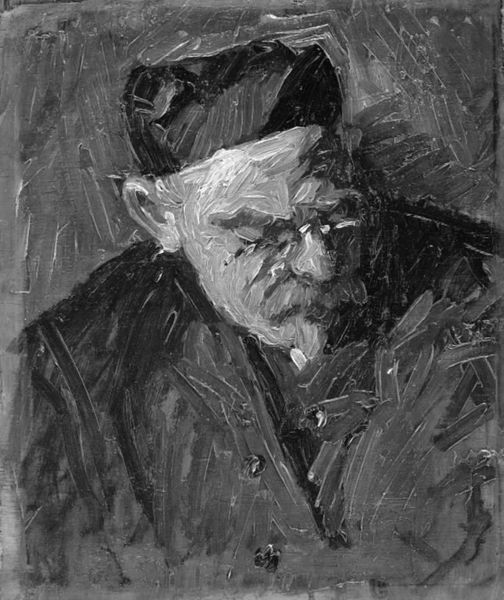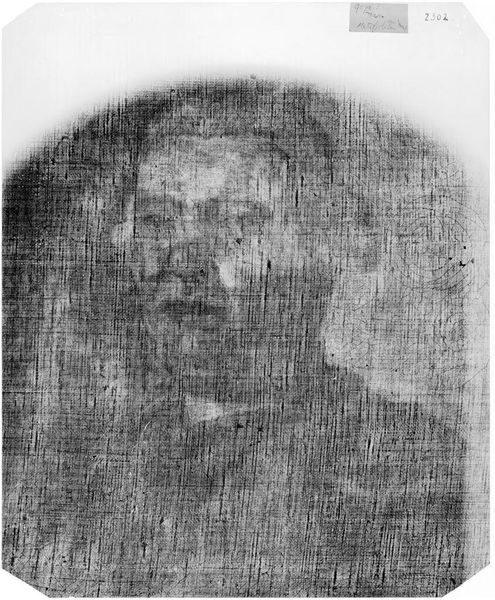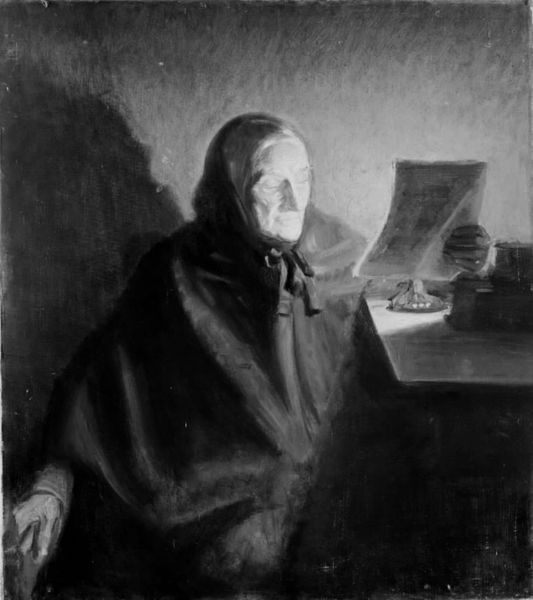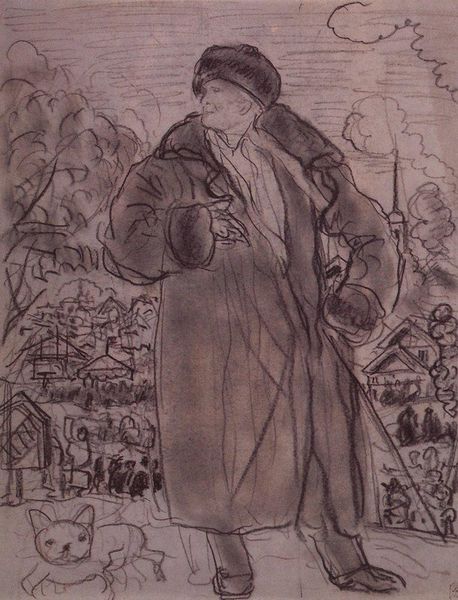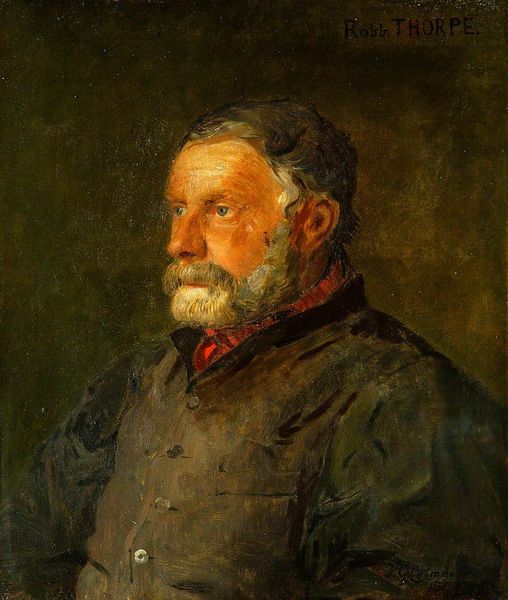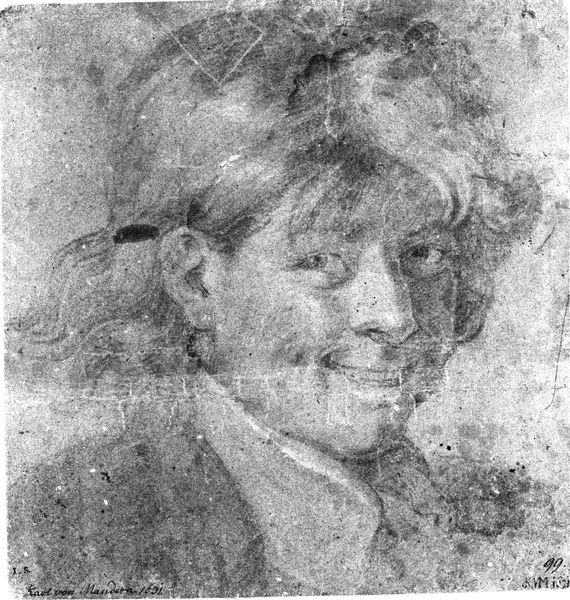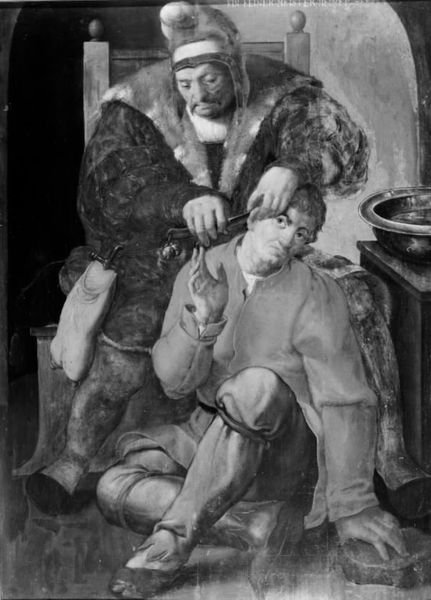
drawing, charcoal
portrait
drawing
portrait
charcoal drawing
charcoal
realism
Dimensions: 61 cm (height) x 53 cm (width) (Netto), 78.3 cm (height) x 70.5 cm (width) x 8.2 cm (depth) (Brutto)
Curator: I’d like to introduce you to Niels Katkjær's “Storyteller,” created in 1908 and currently housed here at the SMK. What strikes you first about this portrait? Editor: The subdued tonal palette. The greyscale is remarkably expressive here. It gives the work a very somber, reflective mood, don't you think? Curator: Absolutely. I find it compelling how Katkjær chooses to depict this figure amidst a gathering of objects that give context to his occupation, implying both comfort and isolation. Note the detail given to his attire; he wears a type of overcoat fastened at the shoulders, maybe related to an occupation linked to tradesmen, such as a smith. Editor: I agree. There's also a strong interplay between light and shadow that models the figure's face, and a glass which emphasizes the texture of the subject. The use of charcoal creates a contrast between the smooth plane of the table and the rugged surface of the man. Curator: I see the use of shadow contributing to a strong atmospheric effect, very particular of its era, early twentieth-century, marked by industrial changes, an influence that is perceived across art expressions. Editor: Exactly. The texture is built with such deliberate, varied marks, creating depth in what could easily be a flat composition. And that singular, strategically placed wine glass almost seems to be a reference of an inevitable moment of loneliness. Curator: It invites questions about storytelling itself – what makes a compelling narrative? Is it shared experience or the unique perspective of the teller? Katkjær might be making us question the narratives being promoted within his community. Editor: You know, focusing on these textures and form makes me see this not just as a representation but as an almost tangible presence, revealing emotional dimensions only hinted at by the storytelling of the period. Curator: So, in considering the story behind the storyteller, and focusing on what it may mean, hopefully the socio-cultural context offers a broader comprehension of this portrayal and its resonance across time.
Comments
No comments
Be the first to comment and join the conversation on the ultimate creative platform.
